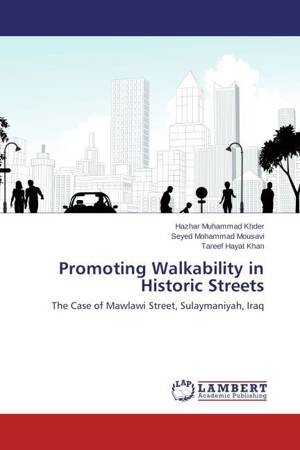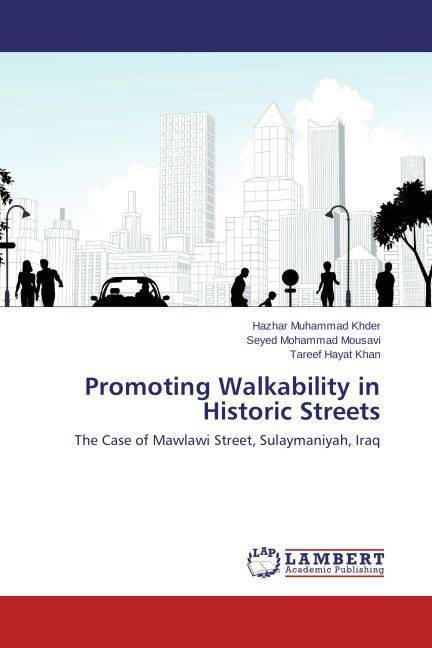
- Afhalen na 1 uur in een winkel met voorraad
- Gratis thuislevering in België vanaf € 30
- Ruim aanbod met 7 miljoen producten
- Afhalen na 1 uur in een winkel met voorraad
- Gratis thuislevering in België vanaf € 30
- Ruim aanbod met 7 miljoen producten
Zoeken
Promoting Walkability in Historic Streets
The Case of Mawlawi Street, Sulaymaniyah, Iraq
Hazhar Muhammad Khder, Seyed Mohammad Mousavi, Tareef Hayat Khan
Paperback | Engels
€ 40,95
+ 81 punten
Omschrijving
The Pleasant walking environment is a precondition for living in a sustainable city. However, the adequacy and the quality of physical elements as the most significant components of street can seriously affect Walkability in the streets. Historically streets were always pedestrian, but in this motor age, many of them lost that walkable environment. The objective of this study was to critically assess the Walkability of Mawlawi Street, a famous street in the historic city of Sulaymaniyah, Iraq. Qualitative interviews, Quantitative Questionnaire, and Direct Observations was conducted on four broader areas of Walkability, namely, Streetscape, Pedestrian Facilities, Road Attributes, and Walking Environment. The findings were validated through an interview with local experts. The study showed that inadequate and poor quality of street s physical elements changed the street to an unsafe and uncomfortable environment for walking with weak and low level of street connectivity and accessibility for pedestrians. Insensitive response to Walkability can always endanger the essence of historic streets, and this study attempted to raise that concern once more.
Specificaties
Betrokkenen
- Auteur(s):
- Uitgeverij:
Inhoud
- Aantal bladzijden:
- 108
- Taal:
- Engels
Eigenschappen
- Productcode (EAN):
- 9783659637131
- Verschijningsdatum:
- 25/11/2014
- Uitvoering:
- Paperback
- Afmetingen:
- 150 mm x 220 mm
- Gewicht:
- 180 g

Alleen bij Standaard Boekhandel
+ 81 punten op je klantenkaart van Standaard Boekhandel
Beoordelingen
We publiceren alleen reviews die voldoen aan de voorwaarden voor reviews. Bekijk onze voorwaarden voor reviews.








